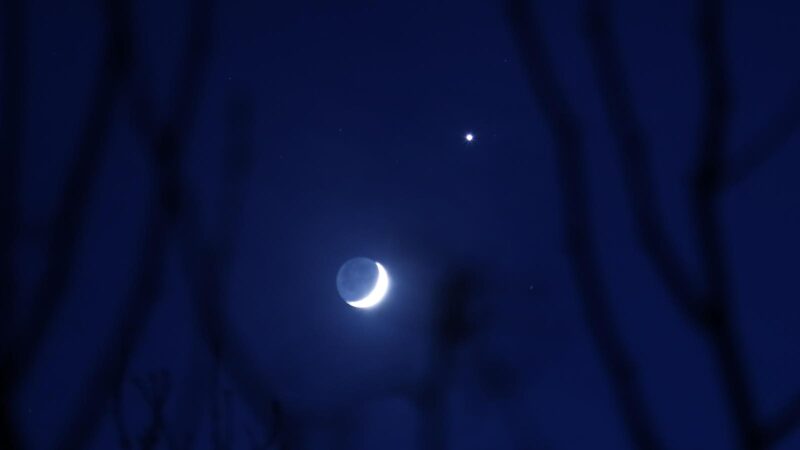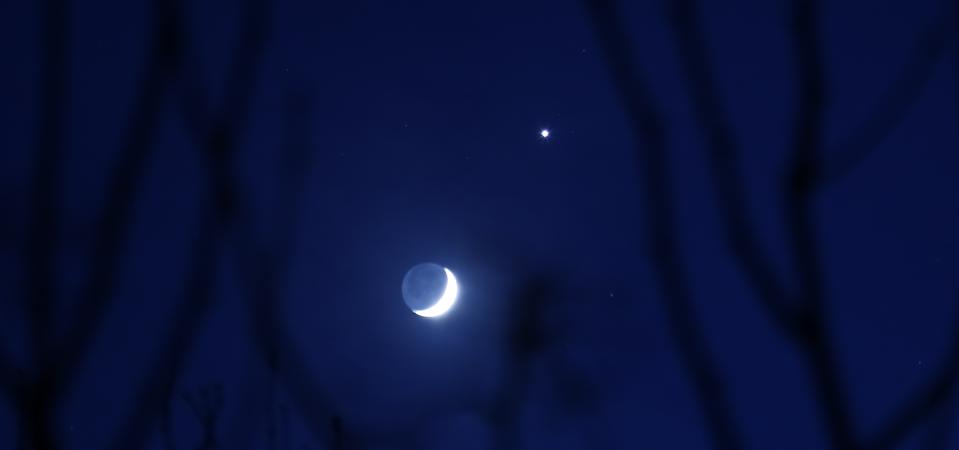The crescent moon and Venus, as photographed by the author on Jan. 3., 2025.
Jamie Carter
Ask any stargazer for their top five sights and you’ll almost always get one repeating — a crescent moon close to Venus, the brightest planet in the sky. The pairing occurs in clusters, then not at all for many months, with the closeness of the crescent moon and Venus in either the morning or evening sky constantly changing each month.
Just before sunrise on Sunday, Oct. 19, the thin crescent moon, just 4%-lit, will appear close to Venus. This pairing — known as a conjunction — is easy to spot with the naked eye. Visible every month for half of 2025, this is the last call for the Venus-crescent moon conjunction this year.
When And Where To Look
The event unfolds shortly before sunrise. About an hour and a half before sunrise, look low to the eastern horizon, where Venus will blaze like a brilliant “morning star.” The crescent moon will sit just to its upper right, glowing in the twilight, with the pair fading as sunrise nears. Observers across the Northern Hemisphere will be able to enjoy the conjunction, provided skies are clear.
What You’ll See
Venus will dominate the scene, shining brighter than any star in the night sky. Beside it, the young crescent moon will glow softly, with the rest of its disk faintly lit by “Earthshine” — sunlight reflected from Earth’s oceans, ice caps and clouds — onto the moon’s night side.
For the best view, find an observing spot with a clear view of the eastern horizon, free from trees or buildings. Binoculars will get you a great view, particularly of the moon.
What’s Next In The Night Sky
As the moon wanes to a new moon on Oct. 21, skywatching is about to get serious, with the onset not only of a major meteor shower but also possible views of two bright comets. On Oct. 21-22, the Orionid meteor shower — the product of Halley’s Comet — will peak under the moonless skies, with up to 20 meteors per hour expected. That same night — and a few nights either side — will see the brightest views of comet Lemmon (C/2025 A6) and comet SWAN R2 (Comet C/2025 R2). They are forecast to become visible to the naked eye, and at least be binocular objects.
The times and dates given apply to mid-northern latitudes. For the most accurate location-specific information, consult online planetariums like Stellarium.
Wishing you clear skies and wide eyes.









